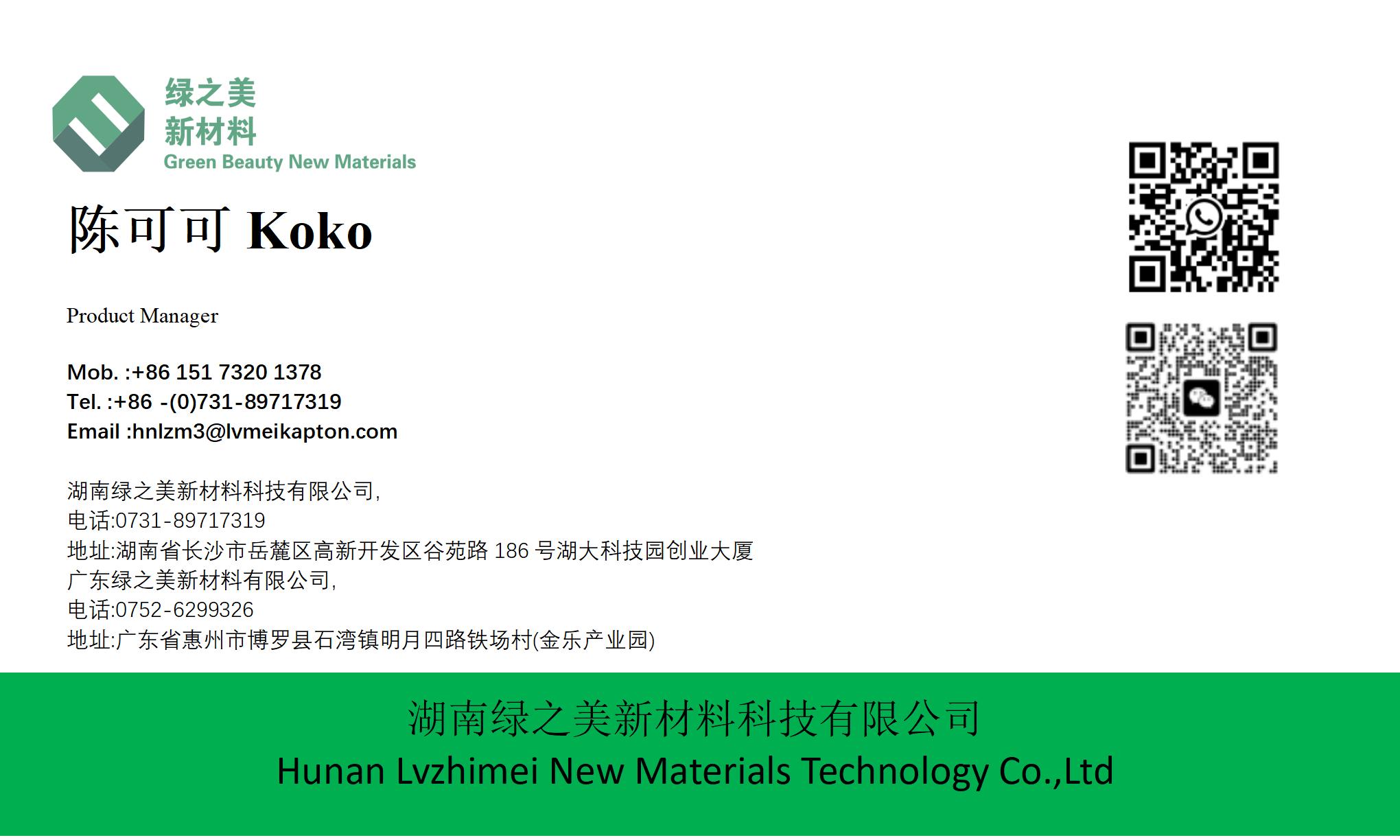hnlzm@lvmeikapton.com
+86 13787123465


Hunan Lvzhimei New Material Technology Co., Ltd.


NameDescriptionContent
What Is Gold Finger Polyimide Tape and How Does It Revolutionize PCB Protection? |https://www.lvmeikapton.com/
Source:
|
Author:Koko Chan
|
Published time: 2025-07-22
|
16 Views
|
Share:
The gold fingers on PCBs are particularly vulnerable during wave soldering. Molten solder has high fluidity, and without proper protection, solder bridging easily occurs, causing short circuits and potential board报废. Therefore, effective protection of gold fingers has become a pressing issue, driving the development of advanced materials like Kapton polyimide tape.

1. Introduction1.1 Challenges in PCB ManufacturingIn the rapidly evolving electronics industry, PCB manufacturing faces significant challenges. As electronic products evolve towards miniaturization, high performance, and multifunctionality, high-density PCB designs become increasingly critical. Devices such as smartphones and smartwatches require more components in smaller spaces, leading to narrower component pitches, finer line spacing, and increased layer counts. This complexity often results in manufacturing issues: design errors can cause production failures, low yields, high costs, delayed deliveries, and potential electrical or reliability problems.
The gold fingers on PCBs are particularly vulnerable during wave soldering. Molten solder has high fluidity, and without proper protection, solder bridging easily occurs, causing short circuits and potential board报废. Therefore, effective protection of gold fingers has become a pressing issue, driving the development of advanced materials like Kapton polyimide tape.
2. Characteristics of Kapton Polyimide Tape2.1 Material CompositionKapton polyimide tape uses polyimide (PI) film as the substrate, featuring a highly cross-linked molecular structure that provides exceptional thermal and chemical stability. PI’s imide rings confer high thermal resistance and chemical inertness. The surface is coated with silicone adhesive, maintaining adhesion at high temperatures without corroding the substrate.
The combination of PI and silicone adhesive offers unique advantages: the adhesive’s flexibility enables precise conformal coverage of uneven PCB surfaces, ensuring secure adhesion during wave soldering. Post-process removal leaves no residue, avoiding contamination and subsequent processing issues.
2.2 Outstanding Performance
●
High Temperature Resistance: Withstands up to 300°C, exceeding the typical 250°C wave soldering temperatures.
●
Strong Adhesion: Adhesion strength of 12 N/cm, preventing tape displacement during soldering.
●
Zero Residue: No adhesive残留 post-removal, eliminating cleaning steps.
●
Electrical Insulation: 5 kV dielectric strength, 2.5x higher than traditional masking tapes, ensuring reliable circuit protection.
3. Comparison with Traditional PCB Protection Materials3.1 Limitations of Traditional Materials
●
Low Heat Resistance: Materials like phenolic resin can deform or melt at wave soldering temperatures.
●
Weak Adhesion: Traditional tapes (5 N/cm adhesion) may peel or shift, causing solder bridging.
●
Residue Issues: Residue rates of 3.8% post-removal risk circuit contamination and failures.
3.2 Performance Advantages of Kapton Tape
●
Superior Heat Resistance: 300°C vs. traditional materials’ 180°C limit.
●
Enhanced Insulation: 5 kV dielectric strength vs. 2 kV.
●
Adhesion and Cleanliness: 12 N/cm adhesion with zero residue, ensuring protection and process efficiency.
4. Practical Application Cases4.1 Application Scenarios
●
Wave Soldering: Precisely covers gold fingers to prevent solder bridging.
●
Li-ion Battery Manufacturing: Insulates electrode tabs during welding to avoid shorts.
●
Aerospace and Defense: Protects PCBs in extreme environments, guarding against moisture and dust.
●
Transformer Coils: Provides insulation wrapping to prevent coil short circuits.
4.2 Application Effects
●
Reduced Rework: Rework rate decreased by 45% due to solder bridging prevention.
●
Efficiency Boost: Production efficiency improved by 30% through streamlined processes.
●
Quality Enhancement: Stable electrical performance and extended product lifespan.
5. In-depth Discussion on Technical Advantages5.1 Mechanism of Preventing Solder BridgingKapton tape acts as a barrier using its high temperature resistance and adhesive strength. During wave soldering, it firmly covers gold fingers, preventing solder infiltration. Its stability at 300°C ensures it does not degrade, maintaining integrity even in molten solder environments.
5.2 Impact of Heat Resistance on ReliabilityRobust heat resistance safeguards gold fingers from thermal damage during manufacturing and long-term device operation. It reduces the risk of shorts, prolongs PCB lifespan, and enhances overall product reliability in harsh conditions.
6. Economic Benefit Analysis6.1 Impact on Production EfficiencyBy eliminating frequent rework due to solder bridging, Kapton tape accelerates production cycles. The 45% reduction in rework and 30% efficiency boost save costs and expedite order fulfillment.
6.2 Impact on Production CostsWhile initial material costs may be higher, long-term savings outweigh upfront expenses:
●
Reduced Waste: Less scrapped PCBs and components.
●
Lower Quality Costs: Fewer post-sale repairs or returns.
●
Scale Efficiency: Higher output with fewer interruptions.
7. Development Trend Outlook7.1 Technological Development Trends
●
Material Innovation: Enhancing heat resistance, chemical resistance, and mechanical strength through PI modifications.
●
Performance Upgrades: Higher adhesion, zero residue, and advanced insulation properties.
●
Process Advancements: Integration of automation and AI for precision manufacturing.
7.2 Market Application ProspectsDemand will surge with 5G, IoT, AI, and EV growth. Key sectors include:
●
Consumer Electronics: Smartphones, wearables, etc.
●
Automotive: Electric vehicle control systems.
●
Industrial Automation: High-reliability equipment.
●
Medical Devices: Safety-critical electronics.
Insert Chart/Graph Suggestions (To Be Added by User)
●
Table: Technical Specifications Comparison (Kapton vs. Traditional Tapes)
●
Graph: Production Efficiency Improvement vs. Rework Rate Reduction
●
Image: Wave Soldering Process with Tape Application Example
ConclusionKapton polyimide tape’s unique properties revolutionize PCB protection, addressing critical challenges in manufacturing efficiency, reliability, and cost-effectiveness. As electronics evolve, its role will expand across diverse industries, driving innovation in protection materials and processes.
Note: This translation integrates technical details from sourced articles while maintaining a structured English format. Specific charts/images can be inserted at designated sections by the user.


Hunan Lvzhimei New Material Technology Co., Ltd.
Quick Links
Product Categories
© 2024 Hunan Lvzhimei New Material Technology Co., Ltd.All Rights Reserved. Designed by Erge
0731 - 89717319
hnlzm@lvmeikapton.com
+86 13787123465
Room 502, Chuangye Building, No186, Guyuan Road, High-Tech District, Changsha, Hunan, China
CONTACT



